SAN DIEGO, Calif.—Tom Hom’s vision and energy has transformed the once ragged and deteriorated downtown San Diego into today’s vibrant Gaslamp Quarter landmark, that attracts locals and tourists from around the world.
During a fifty-year real estate development career, he built shopping malls and single occupancy apartments in the home city and outside the state. He and his family members own more than 1000 apartments, including 500 in San Diego.
He has been and still is the president and chairman of many business entities. He has served and is still serving on the boards of many organizations, ranging from the arts, education, health and business. He owns or is partnered with over a dozen enterprises.
He also created a legacy for political involvement during 1963-1969 when he was elected to the City Council of San Diego and California State Assembly. His re-election to the Council at that time reflected his popularity with a landslide 87% vote. He remains as the only Asian American elected to the City Council in San Diego’s 160 years of history.
Hom lives a humble and modest life despite his fortune and success. He donates frequently to charities, among them his beloved Chinese Community Church and Diabetes Association. He says, “When you receive, you always remember to give back.” That is what he had learned from his parents when he was a child.
In a recent interview with The Epoch Times staff, honoring Asian Heritage month, the now 84-years-old Tom Hom recounted a few events that changed his life.
Hom was born a second generation Chinese-American in 1927, a time when Chinese immigrants were assumed to work either in a Chinese restaurant, or in a dry cleaning shop. He is the third oldest son of a family of 12 children. His father, David Hom, came to America in 1909 at the age of 15. Ten years later, the family opened the David Produce Company.
Hom’s father was one of the people who had the biggest influence on his life. Once, when Hom was about 12, his father’s truck broke down across the street from City Hall while they were delivering produce. Hom recalled, “My dad pointed to City Hall and told me in his broken English: ‘Tom, in America, the kind of laws that come out of there is dependent upon the kind of people they put in there.’”
Hom’s father died at the early age of 47. At that time, the oldest son in his family was in the U.S. Air Force, fighting in World War II, so Tom and his second brother had to work hard to support their family on their own. After the war, they saved up some money, and wanted to buy their mother a nicer house.
They found a house in North Park that was big enough for the family. But when they were ready to buy, the realtor told them that only Caucasians could buy, and for non-Caucasians, the only way they could live there was if they were house servants. However, being tipped that if there were no objections from the residents, there were no problems, Tom’s mother took his 2-year-old brother and went door-to-door, saying, “I am Mrs. Hom, and we want to buy that house. I have nice children, no trouble. I hope you have no objections.” By doing this, they eventually got the house.
Hom encountered a similar scenario when he had hoped to go to college and become an art teacher, because he had loved painting since he was a child. However, he was kindly but frankly advised that there was no place for a Chinese person in the teaching profession.
“Those were the times when Chinese were discriminated against,” Hom said, which brought back memories of what his junior high school teacher, another person he considers having the most influence on him, Mr. William J. Oaks, had said to him.
The school had had a lot of immigrant children. He remembered Mr. Oaks had told these students, “Boys and girls, I want you to know that you’re Americans. I want you to know that you have all the rights of Americans, all the opportunities that are out there, and I want you to get your education, and learn it, and go out there and be involved.”
That was when Hom thought about what his dad had told him about City Hall, and decided to get involved, and to try to make a difference. He started out by campaigning with political candidates.
Once in a while, Hom visited his older brother at the naval station. One time, he discussed with a naval medical doctor his plan of getting involved. The doctor said to him, “Tom, I want you to meet a man that might be able to help you.”
Next: Running for public office
Hom emphasized the importance of having a presence. When he was Deputy Mayor in 1964, he was invited to give a commencement speech for the famous Grambling State College in Louisiana. He did, but on the way back to the airport, he asked the college president why, when he could have invited hundreds of prominent people, did he pick him, all the way from San Diego? The president replied, “Tom, I am a historian, and I know all the anti-Chinese laws. I picked you because you are an example, and I want my kids to see you.”
After Hom left public office, he concentrated more on business and development. He recalled the preservation of downtown San Diego, and how he and others turned the ragged place into “the heart of San Diego’s historical site.”
Historically, the area had attracted investors because it overlooks the San Diego harbor. Although some outstanding architecture remained , at that time in the 1970s the area remained in very bad shape. The streets were scattered with tattoo parlors, seedy bars, pawnshops, and various adult businesses.
Hom led the effort to have the area preserved as a “National Historic District” to save some of the Victorian buildings. He recalls how he and his late wife of 48 years, Dorothy Hom, would go down the street in suits, picking up wine bottles and old newspapers, and putting them into trash cans. People watched them and followed, “we cleaned up the area pretty much this way,” he chuckled.
Hom is a businessman. He said that to rebuild a place like this, having a catalyst is an essential factor. For a shopping center, a catalyst could be a Macy’s or a Nordstrom. Other stores center around it and build off of it. One of the first catalysts Hom brought to Gaslamp was the “Old Spaghetti Factory” from Seattle. Through Gaslamp, Hom said he also learned that the presence of artists adds vision to the place. With more fine artists coming to open galleries, it brought Gaslamp to a new level.
When asked why he decided to invest in the long deteriorated downtown San Diego, Hom explained that real estate works in cycles. The pioneer comes first, followed by the builder. Then, another person follows and makes it even better. Then, heirs take over and eventually abandon it, causing it to deteriorate. “It’s a cycle,” Hom explained. “90-100 years, four to five generations. You’ll find that everywhere in America. Here in America, our cycles go more rapidly than in Europe. America is young and vibrant, and always wants change.” He gave that reason for why he was confident in redeveloping old areas like downtown San Diego.
Hom and his late wife Dorothy raised 6 children. Hom wished to pass on a certain legacy to his children. He told the children, “The money can be made, can be spent, but that’s not important. What’s important is the ability to know yourself, and to be able to take care of yourself. Whenever you receive, give back. If it does not come back to you, it will come back to somebody. It comes back in many forms.”
As his father told him, “be proud of being a Chinese and who you are.” Hom gave the same advice to his children. All the children kept their Hom last name and even the ladies after they married.
No matter how busy we were, Hom said, “There was one rule in the house: we always have dinner together. Because that’s the time when we share the day’s events, let our hair down, and talk about our activity. That’s what we always share. And our dinners always would run pretty long. We’d talk about problems, and some of the good things that happened. Dinner was a requirement.”
Dorothy passed away 11 years ago due to cancer. The day before she died, she had all the children gathered in front of the bed, and said, “I don’t want your dad to be alone the rest of his life. I want you to find a good wife for him.”
As if predestined, Hom met his second wife Loretta the next year in a Hawaiian church. Both agreed that their meeting and marriage were the results of “arranged” events.
In addition to his successful careers in business and politics, Hom plays the piano and accordion. He still maintains a great passion for painting that he has had since childhood and that he says came naturally to him. He has several paintings depicting the lives of early Chinese immigrants that are displayed in his home.

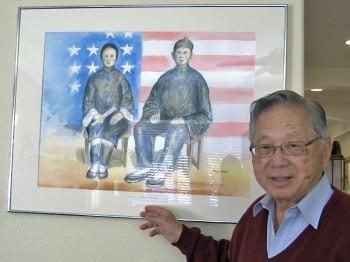
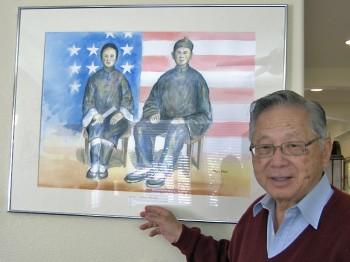
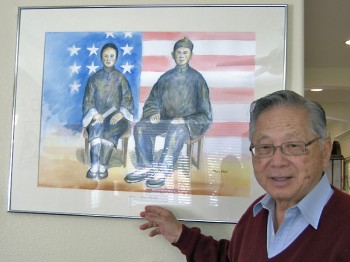
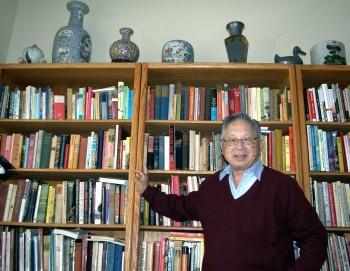
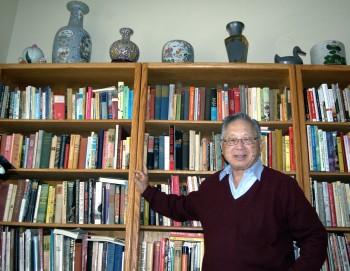
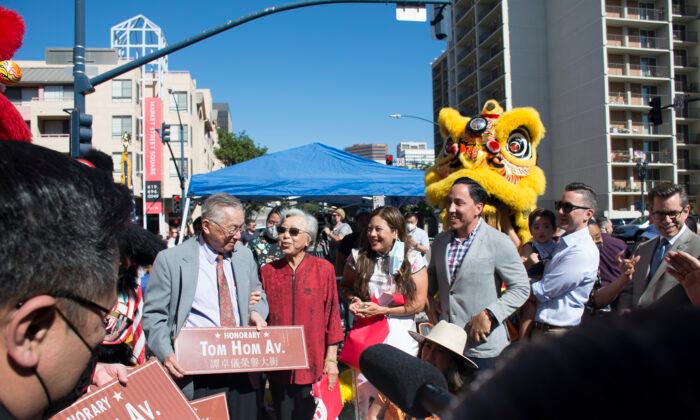
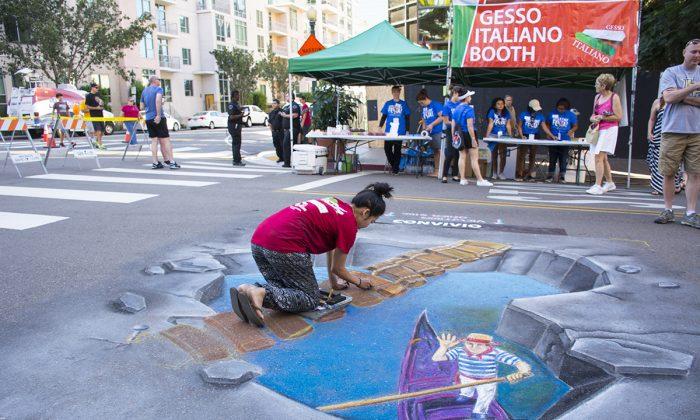

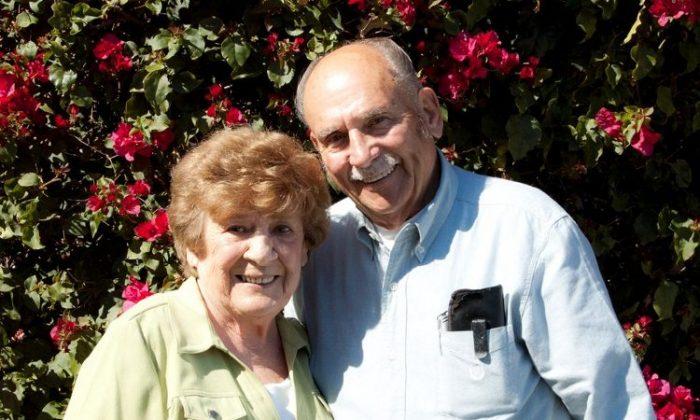
Friends Read Free